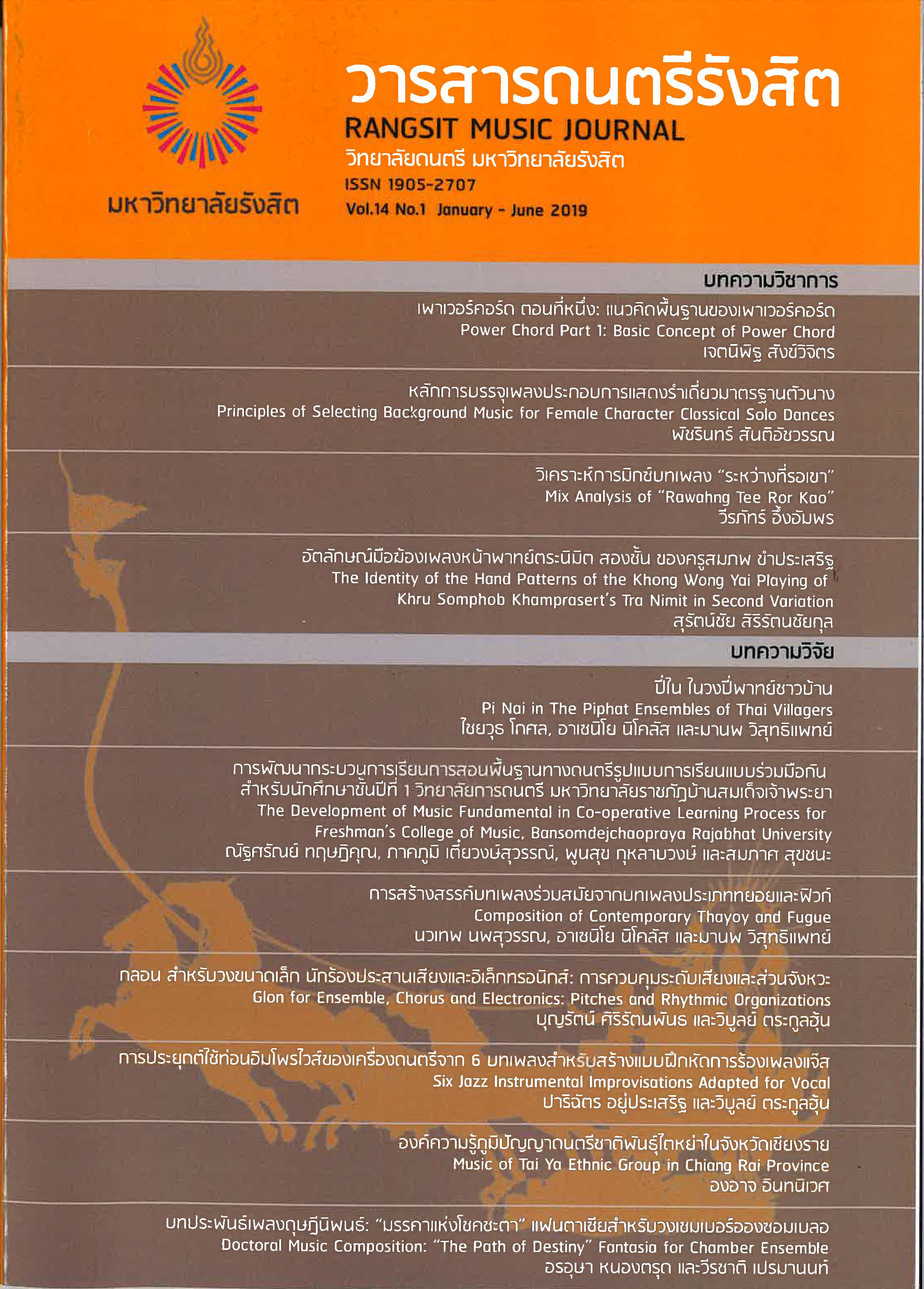Pi Nai in The Piphat Ensembles of Thai Villagers
Keywords:
pi nai, piphat ensemble, local cultureAbstract
The pi nai is a type of musical instrument with a quadruple reed played in the Thai piphat ensemble. The objectives of this research are: 1) to study the characteristic of pi nai , 2) to study the context of pi nai, and 3) to describe and analyze the pi nai in local piphat ensembles. This dissertation is a qualitative research which employs the methodological study in ethnomusicology. Data were collected based on fieldwork from 12 samples of pi nai players. The analysis was based on structural functional theory, cultural diffusion theory, aesthetics theory and Thai music theory. The results of this research are as follows: 1) Pi nai is found in 4 sizes; 2) Pi nai is found widespread in all regions in Thailand. Pi nai has an important role in the piphat ensemble; 3) Musical pieces for pi nai are divided into 4 groups: melodies for beginners, melodies for piphat ensembles, melodies for folk ensembles, and special melodies for pi nai. The pi nai is played in various styles of melodic embellishment, therefore many patterns of melodic variation, fingering techniques, tongue techniques, and breathing techniques are applied during the performance.
References
2. Jitrmanee, Anong. Production methods of peenai. Bangkok: Chulalongkorn University Press, 2005.
3. Kayam, Umar. Seni, Tradisi, Masyarakat (essays). Jakarta: Penerbit Sinar Harapan, 1981.
4. Konglaitong, Peep. The pi chui chai song: Musicological analysis and reflection of aesthetics. Bangkok: Mahidol University Press, 1995.
5. Lekagoon, Krit. A study of the sound system and sound characteristics of the pi nai. Bangkok: Mahidol University Press, 2009.
6. Lihui, Huang. “Inheriting Traditional Folk Performance in Modern Society.” In Multidisciplinary Research Perspectives in Education, edited by I. Liyanage and B. Nima, 139-147. New York: Springer, 2016.
7. Onlamoon, Wichian. Piphat. Bangkok: Chandrakasem Rajabhat University, 1997.
8. Ookaew, Jare. Pi nai learning and teaching process in higher education institutions. Bangkok: Mahidol University, 2004.
9. Patel, Marti. “Wat Phra Yuen at Lamphun.” Accessed August 13, 2017. https://sanuksanuk.wordpress.com/2011/07/26/wat-phra-yuen-at-lamphun/
10. Sanitsantiya, Chatchawan. Single analysis of the krau nai sam chan music of Kru Jamnien Sritaipan. Bangkok: Chulalongkorn University Press, 2010.
11. Sobreuk, Anan. History and development of the Thai pi. Bangkok: Mahidol University Press, 1990.
12. Sutton, Richard Anderson. “Musical Pluralism in Java: Three Local Traditions.” Ethnomusicology 29, 1 (1985): 56-85.
13. __________. Traditions of gamelan music in Java: Musical pluralism and regional identity. Cambridge: Cambridge University Press, 1991.
14. Wongthes, Sujit. Suphan dreams: Local music, modern music, looktung music and the stories of Suphan. Bangkok: Samakhom Kitchawatthanatham, 1990.
15. Yoopote, Tanit. Thai musical instruments and international musical instruments. Bangkok: O.S. Printing House, 2002.







